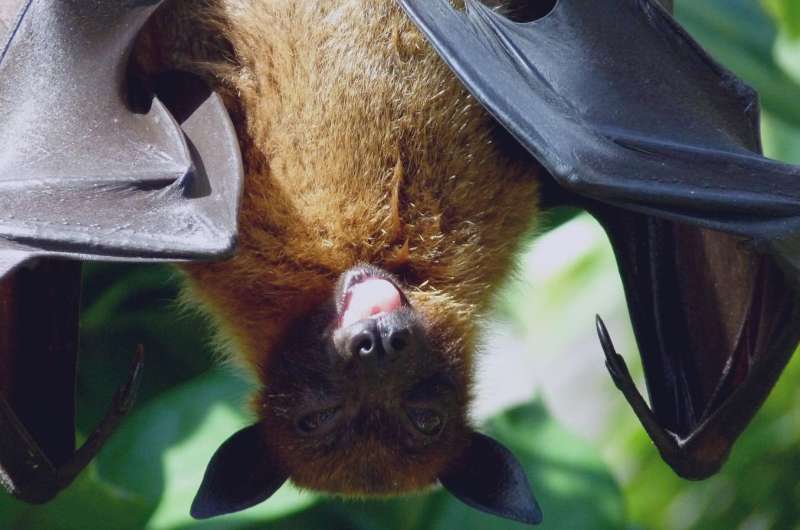August 9, 2017 report
Increased floodlighting reducing bat populations in Sweden's churches

(Phys.org)—A trio of researchers, two from Sweden and one from Spain has found that installing floodlighting around rural churches drives away roosting bats. In their paper published in Royal Society Open Science, Jens Rydell, with Lund University, Johan Eklöf, with Graptolit Ord och Natur and Sonia Sánchez-Navarro with Estación Biológica de Doñana-CSIC describe their comparison of church bat populations over the course of several decades.
Bats in Sweden are generally welcomed because they eat destructive insects and tend to hide at night. But bats have a unique history in the country, as well, because Sweden does not have many caves—instead, most of the bats live in the warm towers and belfries of rural churches. But, the researchers suggest, a recent lighting trend has put the bats at risk, and their numbers are falling.
Rydell has been interested in bats for many years—back in the 1980s, he conducted surveys of specimens living in 61 churches in southwest Sweden, making population charts. In this new effort, he and his colleagues revisited those churches along with 50 others, counting the number of brown long-eared bats.
The researchers concluded that bat populations had remained stable in churches that lacked floodlighting. But in churches with such lighting, populations dwindled depending on how much lighting had been installed. In churches where floodlights were installed on all four sides of a building, there were no bats left at all.
Installing floodlights, the researchers note, became popular over the past few decades as church staff sought to show off the unique architecture at night. The contrast of the usually stark white buildings lit against a deep black sky offers an inspiring visage, but, it also makes resident bats much more vulnerable to predation by owls, hawks and cats.
The researchers note that bats are protected in Sweden—it is against the law to harm them, or even to disturb them. They suggest it is likely that most of the people involved in installing church lighting do not know that their efforts have caused problems for the bats. They suggest a partial solution—instead of installing lighting all the way around a church, leaving at least one side dark, preferably the side closest to trees. The bats will adjust and only roost on that side.
More information: Jens Rydell et al. Age of enlightenment: long-term effects of outdoor aesthetic lights on bats in churches, Royal Society Open Science (2017). DOI: 10.1098/rsos.161077
Abstract
We surveyed 110 country churches in south-western Sweden for presence of brown long-eared bats Plecotus auritus in summer 2016 by visual inspection and/or evening emergence counts. Each church was also classified according to the presence and amount of aesthetic directional lights (flood-lights) aimed on its walls and tower from the outside. Sixty-one of the churches had previously been surveyed by one of us (J.R.) between 1980 and 1990, before lights were installed on Swedish churches, using the same methods. Churches with bat colonies had decreased significantly in frequency from 61% in 1980s to 38% by 2016. All abandoned churches had been fitted with flood-lights in the period between the two surveys. The loss of bat colonies from lit churches was highly significant and most obvious when lights were applied from all directions, leaving no dark corridor for the bats to leave and return to the roost. In contrast, in churches that were not lit, all of 13 bat colonies remained after 25+ years between the surveys. Lighting of churches and other historical buildings is a serious threat to the long-term survival and reproduction of light-averse bats such as Plecotus spp. and other slow-flying species. Bat roosts are strictly protected according to the EU Habitats Directive and the EUROBATS agreement. Lighting of buildings for aesthetic purposes is becoming a serious environmental issue, because important bat roosts are destroyed in large numbers, and the problem should be handled accordingly. As a start, installation of flood-lights on historical buildings should at least require an environmental impact assessment (EIA).
Journal information: Royal Society Open Science
© 2017 Phys.org




















